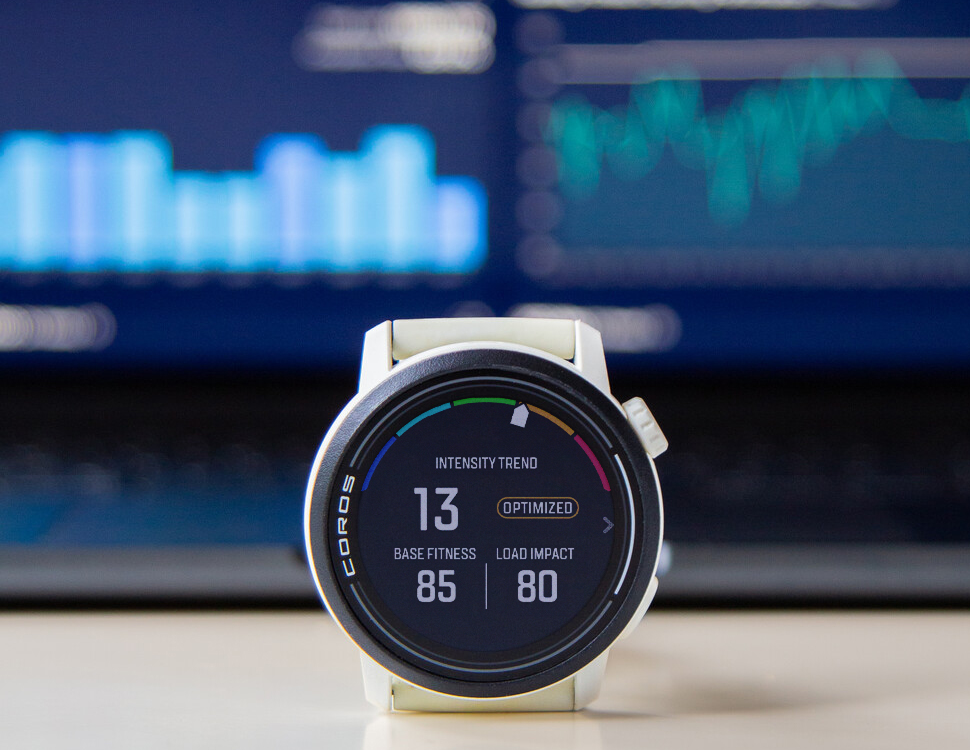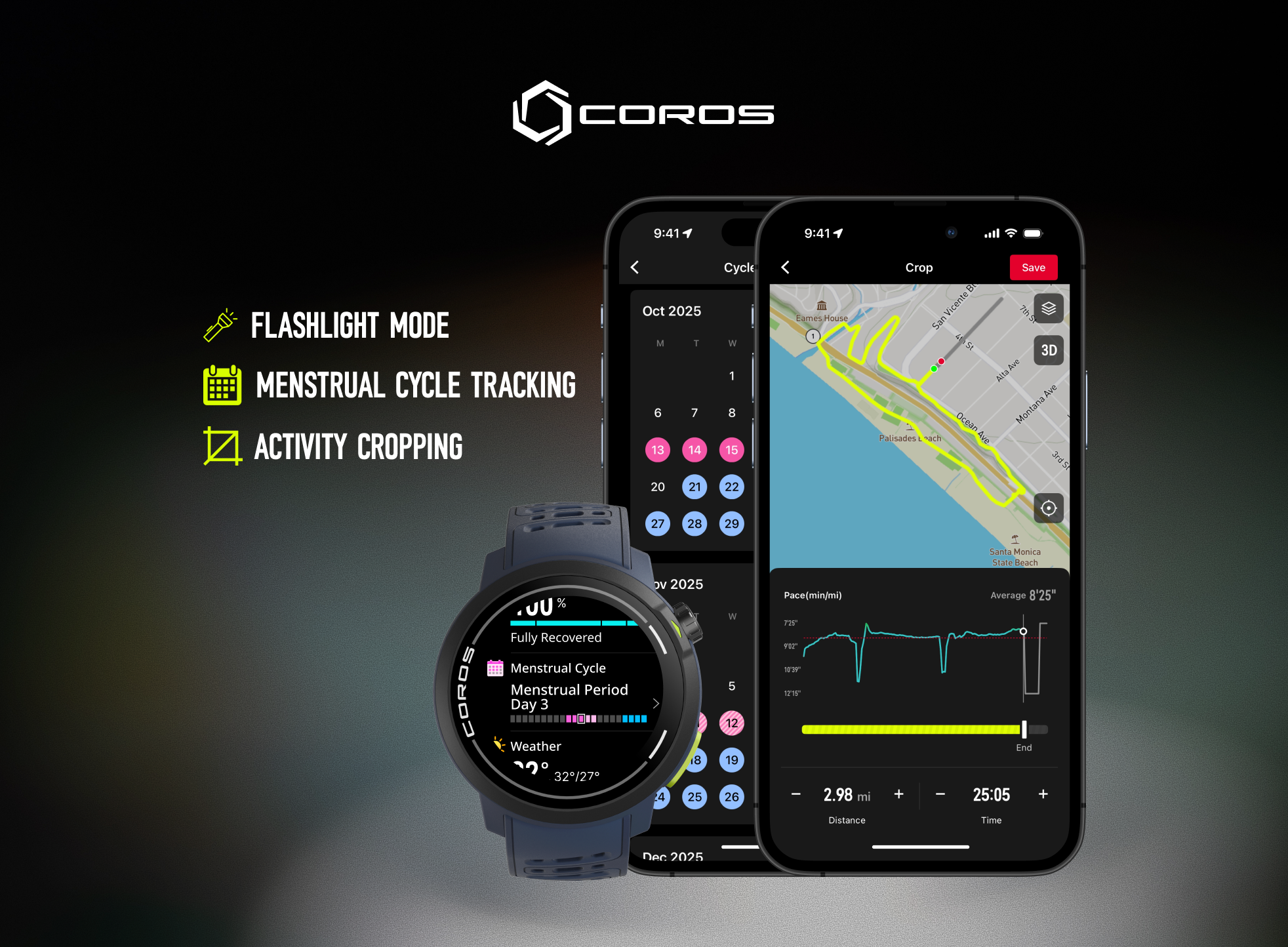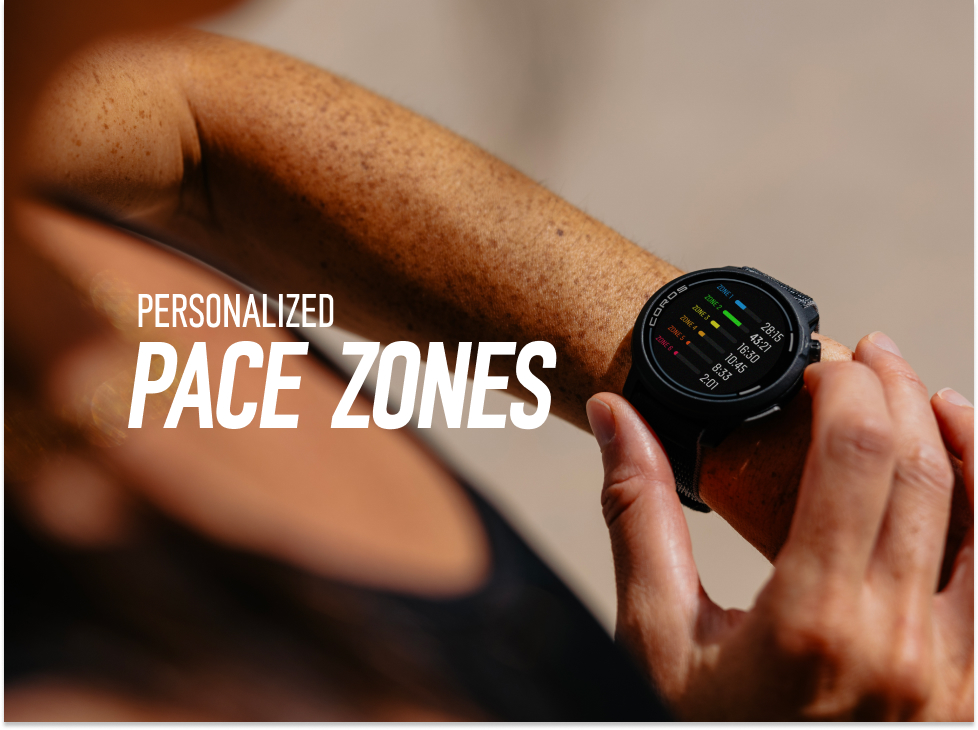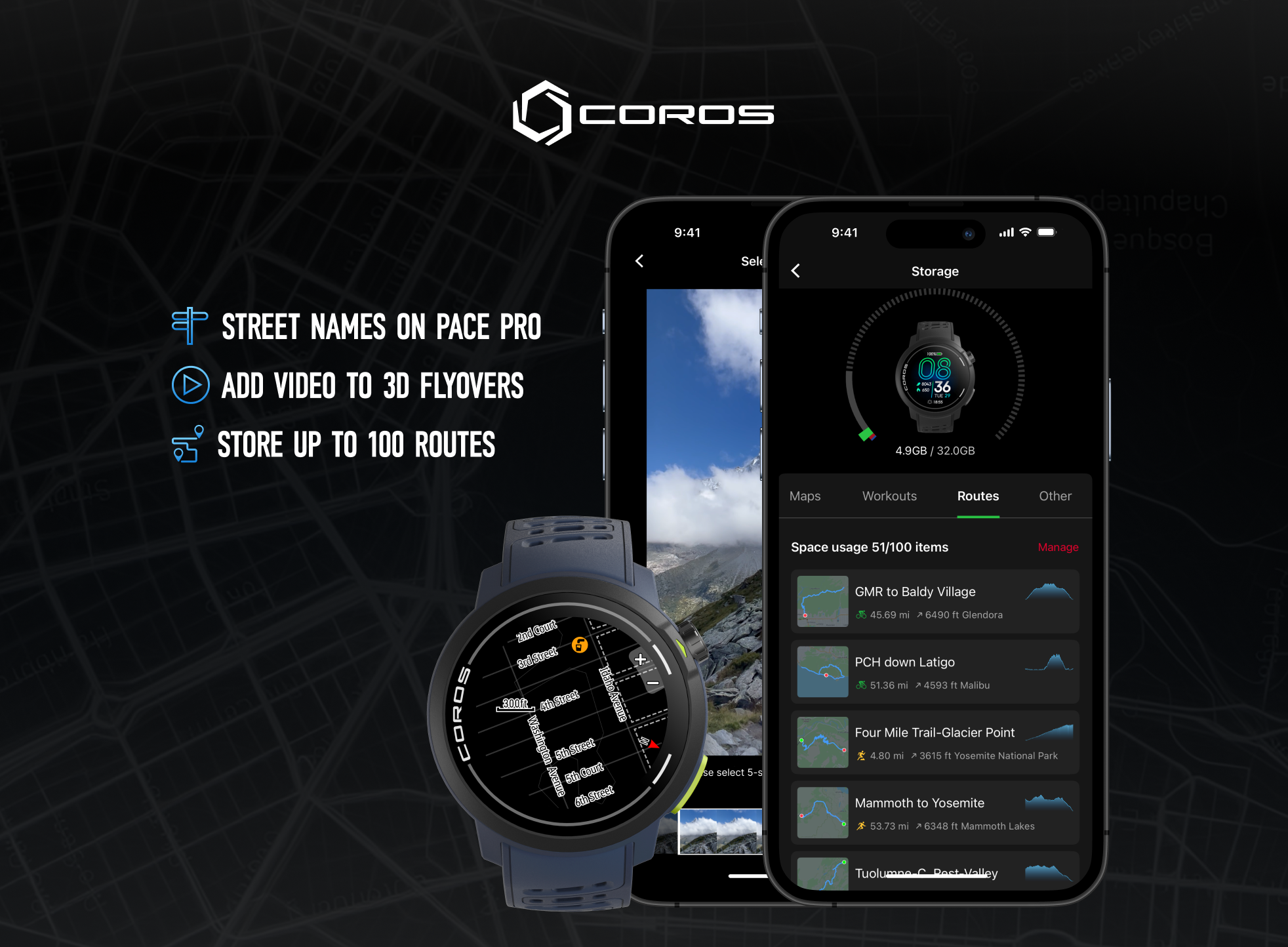Heart rate (HR) monitoring has been one of the great pillars of training tools for athletes and coaches. Countless HR zones have been created over time to assist athletes in their progress and monitoring of their training routine. For a model to be reliable, it requires at least one anchor point (or reference value) in your heart rate that you are certain is accurate for the model to be based on.
At COROS, we offer you 3 distinct HR-zone models to help you based on your needs as an athlete. Each model is built with at least one of those anchor points to ensure accuracy. Below you will find a breakdown of each model as well as their pros and cons.
| HR-zone Model | Number of zones | Reference Value(s) |
| Lactate Threshold | 6 | Threshold HR |
| Heart Rate Reserve | 6 | Resting HR + Max HR |
| Max Heart Rate | 6 | Max HR |
Lactate Threshold HR Zones
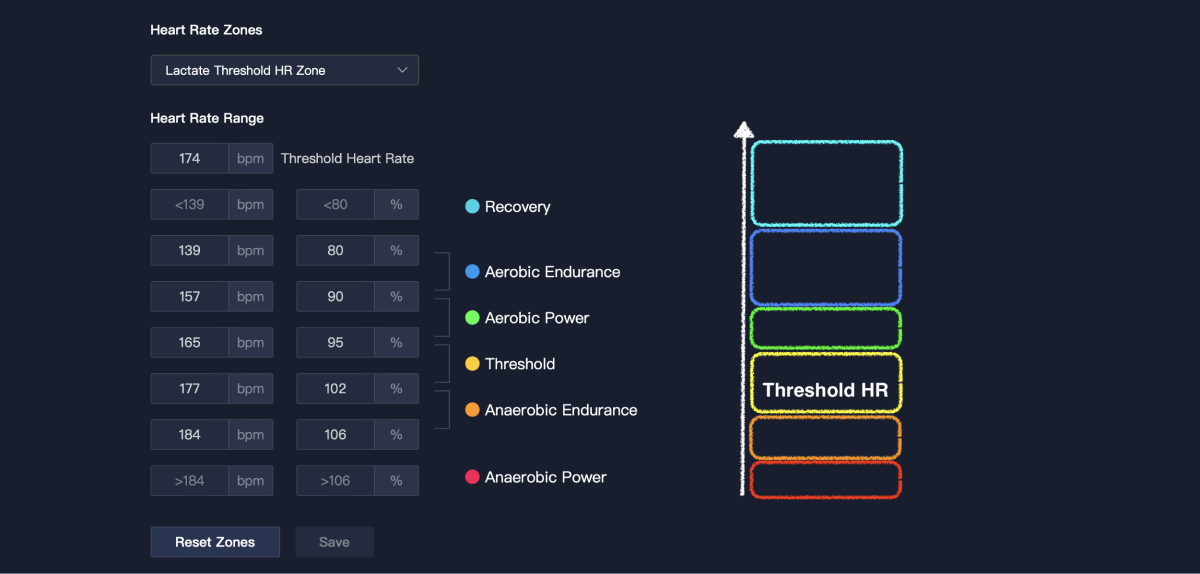
Lactate Threshold HR Zones via the Training Hub.
Our Lactate Threshold (LT) HR model is based on your Threshold HR, the intensity that seperates sustainable and unsustainable efforts. Since this model is based on this performance metric, it is suitable for athletes who wish to improve their performance towards specific goals.
EvoLab Analysis. No matter the model you choose for training, EvoLab will always use the default zones of the Lactate Threshold model to analyze and update your metrics over time due to its accurate representation of your current running ability.
Zone 1 (Recovery): <80% Threshold HR
- This range corresponds to very low exercise intensity. It is suitable for active recovery.
- This intensity can be sustained for multiple days.
- Hiking or recovery runs fall into this category.
Zone 2 (Aerobic Endurance): 80-90% Threshold HR
- This range is comfortable enough to maintain conversations. It is suitable for fundamental cardiovascular training, which mainly focuses on aerobic capacity.
- This intensity can be sustained for multiple hours.
- Easy and long runs fall into this category.
Zone 3 (Aerobic Power): 90-95% Threshold HR
- This range leads to a sudden increase in breathing rate and it becomes harder to maintain conversations. It is suitable for improving running form and techniques such as breathing or cadence.
- This intensity can be sustained for 1-3 hours.
- Tempo runs fall into this category.
Zone 4 (Threshold): 95-102% Threshold HR
- This range falls right into your threshold area. The effort is barely sustainable and rather uncomfortable. Training in this zone improves your ability to sustain harder efforts for longer.
- This intensity can be sustained for 45-60 minutes.
- 15-min intervals fall into this category.
Zone 5 (Anaerobic Endurance): 102-106% Threshold HR
- This range has now exceeded your threshold ability and therefore becomes quite uncomfortable and unsustainable. Although it does not correspond to maximal effort just yet, it applies to high-intensity training to mainly improve VO2max ability.
- This intensity can be sustained for 3-7 minutes.
- 5-min intervals fall into this category.
Zone 6 (Anaerobic Power): >106% Threshold HR
- This range corresponds to maximal effort where your body will make you stop before you even reach your system's maximum capacity. It is suitable for improving neuromuscular capacity and high-velocity movements.
- This intensity can be sustained for less than 3 minutes.
- 1-min intervals fall into this category.
Why 6 zones? Each HR model has been created to best suit the athletes' training. While you may be used to the standard 5-zone model, our Lactate Threshold model follows the same principle. Our zones 1 to 4 are similar to the standard model. We have, however, decided to split their 5th zone into 2 (Anaerobic Endurance & Anaerobic Power) to better structure high-intensity intervals. That way, athletes can precisely plan their sessions according to the ability they wish to improve.
Heart Rate Reserve Zones
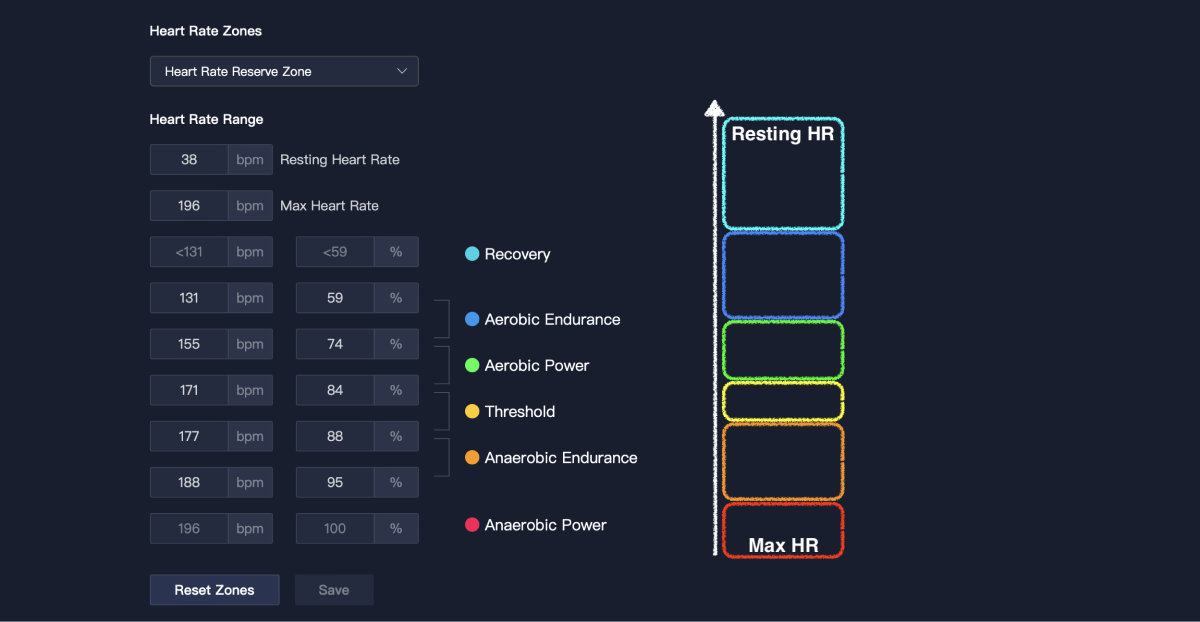
Heart Rate Reserve Zones via the Training Hub.
The Heart Rate Reserve (HRR) model has two anchor points, Max HR and Resting HR. By joining your highest and lowest registered heart rate values, this model provides accurate zones tailored to you over time. As you age, both of those heart rate values change (Resting HR tends to increase, while Max HR tends to decrease).
Therefore, this model is ideal for athletes who wish to focus on their health over time or wish to monitor their heart rate due to medical conditions. Health professionals often use this model to prescribe exercise.
Max Heart Rate Zones
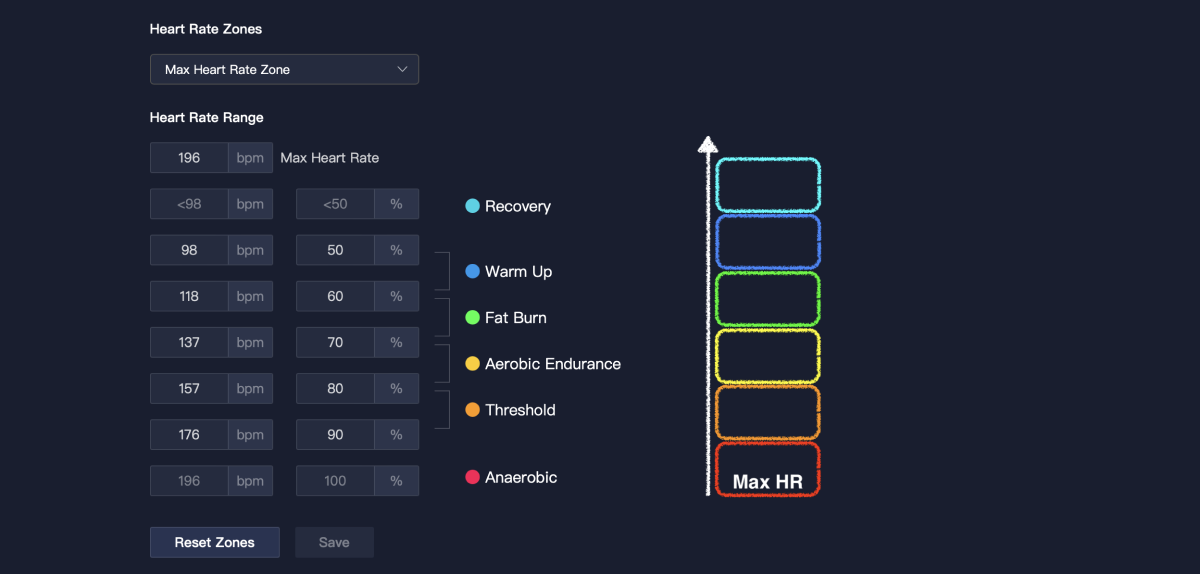
Max Heart Rate Zones via the Training Hub.
The Max Heart Rate model has one anchor point, Max HR. This model is widely used in the training community by coaches and athletes that are getting into the sport. As mentioned above, an HR model requires accurate anchor points. Sometimes, it is not possible due to lack of data or testing.
This is where this model comes in handy. It is relatively straightforward to estimate one's Max HR and use this model to organize sessions. However, once you can acquire more accurate anchor points (such as Resting HR or Threshold HR) we suggest moving to another HR model.
How to estimate Max Heart Rate? A few different ways exist to estimate this value by yourself. For example, you may be familiar with this formula [220 - age]. However, because of its standard deviation of +/- 12 beats, we suggest using this formula instead as it tends to be more precise: [207 - (0.7 x age)].
Which Model Should I Train With?
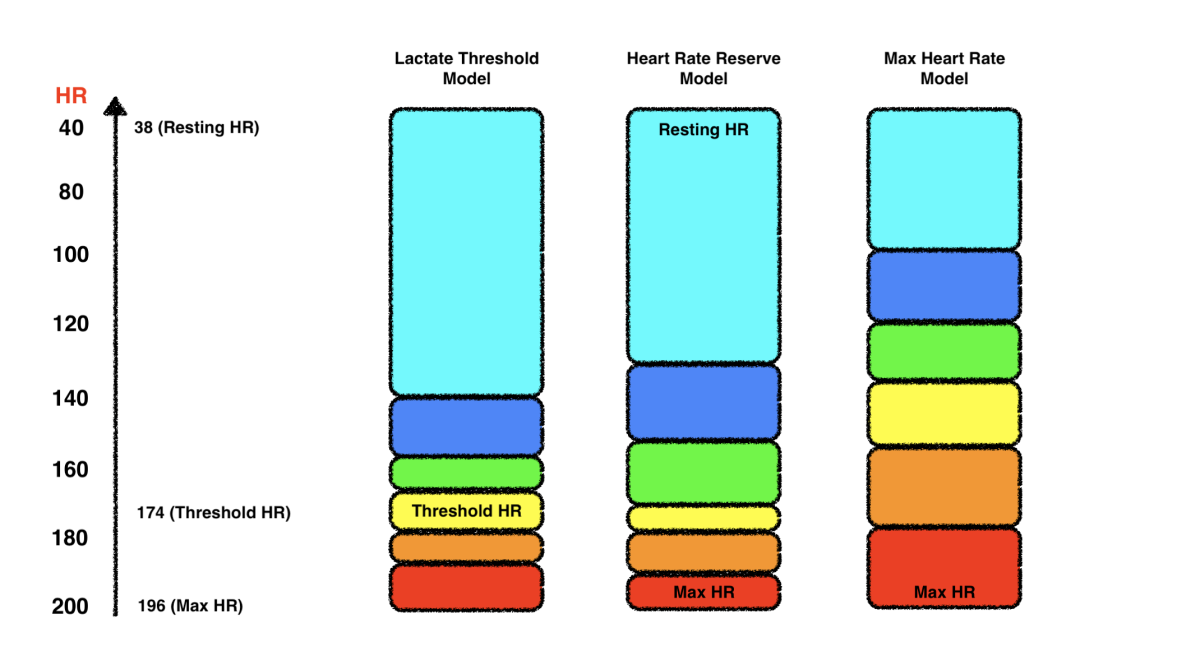
Summary table with all 3 COROS Heart Rate Zone Models.
This guide above is a great representation of all three of COROS' Heart Rate Zones Models in an athlete's case study. Each model presents their own pros and cons as highlighted below.
Lactate Threshold Model
- Based on your Threshold HR, this model provides precise zones near and above threshold to allow your high-intensity workouts to be organized and monitored with more precision. This strategy, however, leads to less precision at easier intensities.
Heart Rate Reserve Model
- Because of its clinical use, this model offers precise zones right below and above threshold to easily monitor improvements in both aerobic and anaerobic capacities. However, it provides less feedback regarding specific marathon and threshold training.
Max Heart Rate Model
- As seen above, this model provides a general breakdown of your heart rate based on its maximal value. Each zone is separated relatively equally, which leads to some discrepancies with the other models.
What about my Threshold Pace Zones? Your pace zones follow the same model as the Lactate Threshold HR zones with one anchor point, your Threshold Pace. Both models should be relatively synchronized during training, although it is possible to notice small deviations as both skills can be improved seperately.
Training With COROS Heart Rate Zones
Training with COROS Heart Rate Zones has never been easier as we provide you with full personalized access to them. You can select the model you wish to use, or custom the zones as you'd like. When you are looking at your activity data, you can see the exact zones you have chose with slight distinctions as seen in the photos below.

Lactate Threshold Default Zones vs. Custom Zones
Why don't my statistics match my training? Your EvoLab metrics will always rely on your Lactate Threshold HR zones to populate data as we want to standardize the process as much as possible. Calculations coming from metrics such as Training Load, Base Fitness, and Running Fitness all use this default model no matter the one you have chosen for your training. This is why you may see small differences between EvoLab statistics and your training sessions.

/filters:quality(90)/fit-in/970x750/coros-web-faq/upload/images/c8644a3f775695023c3d1c42b2e63cfe.png)
